|
more 1930s topics Nostalgia Cafe main page Nostalgia Cafe site map | Music & Entertainment | ||
 Music
Music
 music styles music stylesJazz had its beginnings in New Orleans in the 1890s. What was mostly a southern phenomenon became a nationwide craze in the 1920s when black musicians came to northern cities during the Great Migration. In the 1930s, jazz became more adventurous as it moved from regulated tempos and blues lyrics to the improvisational style known as "hot" jazz. The migration of blacks to northern cities during the 1920s resulted in the Harlem Renaissance: a flowering of black culture in New York City that lasted through the 1930s. Black literature and theater flourished, but it's the music for which the era is best known. In the late 1930s, jazz that was written for dancing broke off into its own musical style...swing music. Performed by big bands with predominantly white musicians, swing would become the most popular music style in the 1940s. God Bless America Solid! Jazz Timeline 1930s Photographs From The Golden Age Of Jazz Strange Fruit Talking Dust Bowl Blues  songs about the Depression
songs about the DepressionBrother, Can You Spare A Dime? Who's Afraid Of The Big, Bad Wolf? Life Is Just A Bowl Of Cherries Happy Days Are Here Again Keep Your Sunny Side Up Talking Dust Bowl Blues (Woody Guthrie) | ----- |
 dancing dancingThere were many popular dances in the 1930s, including the sophisticated Continental and Carioca, the carefree Lambeth Walk and Big Apple, and the Latin-inspired Rumba and Conga. Beginning in the late 1920s, dancers at the Savoy Ballroom enjoyed doing an energetic dance they called the Lindy-Hop. Critics called these gyrating dancers "jitter-bugs," and in the late 1930s the name was applied to the dance itself. What was now known as the Jitterbug was also called Swing, and would remain popular into the 1940s. Archives Of Early Lindy-Hop Jazz Era Vintage Dances Origins Of Swing Dancing  music moments
music moments*"God Bless America" was written by Irving Berlin, and made its radio debut in 1938 on The Kate Smith Hour. The song became Kate's signature tune for the rest of her life. *In 1936, Billboard magazine introduced Chart Line, the first official listing of the most popular songs of the day based on radio airplay. *After 20 years of Congressional debate, "The Star-Spangled Banner" became our national anthem in 1931. | ||
===========================================================================
===========================================================================
===========================================================================
===========================================================================
Hit Songs Of The 1930s
 1930 1930Mood Indigo (Duke Ellington) Putting On The Ritz (Fred Astaire) But Not For Me Can This Be Love? Dancing On The Ceiling Embraceable You I Got Rhythm Love For Sale Bidin' My Time  Putting On The Ritz Fred Astaire (midi) | ----- |
 1931 193199 Out Of A Hundred Wanna Be Loved (Rudy Vallee) Minnie The Moocher (Cab Calloway) Wrap Your Troubles In Dreams (Bing Crosby) Where The Blue Of The Night Meets The Gold Of The Day (Bing Crosby) When The Moon Comes Over The Mountain (Kate Smith) All Of Me Between The Devil And The Deep Blue Sea Dancing In The Dark Dream A Little Dream Of Me Lady Of Spain I Found A Million Dollar Baby (In A Five And Ten Cent Store) Of Thee I Sing When Your Lover Has Gone You're My Everything | ||
 1932 1932It Don't Mean A Thing (If It Ain't Got That Swing) (Duke Ellington) April In Paris 42nd Street I Guess I'll Have To Change My Plan Louisiana Hayride Night And Day You're Getting To Be A Habit With Me |
 1933 1933It's Only A Paper Moon Have You Ever Seen A Dream Walking? Stormy Weather Shadow Waltz The Gold Diggers Song (We're In The Money)  It's Only A Paper Moon (midi) | |||
 1934 1934Anything Goes Autumn In New York I Get A Kick Out Of You You And The Night And The Music You're The Top You're A Builder-Upper |
 1935 1935The Music Goes Round And Round Red Sails In The Sunset You Are My Lucky Star Lullaby Of Broadway I'm In The Mood For Love Moon Over Miami | |||
 1936 1936The Way You Look Tonight Goody Goody Pennies From Heaven It's De-Lovely I'm Gonna Sit Right Down And Write Myself A Letter Gloomy Sunday (Hal Kemp & His Orchestra w/Bob Allen) |
 1937 1937It Looks Like Rain In Cherry Blossom Lane (Guy Lombardo & His Royal Canadians) Ebb Tide Harbor Lights Rosalie Where Or When | |||
 1938 1938A Tisket, A Tasket (Ella Fitzgerald) God Bless America (Kate Smith) Flat-Foot Floogey With The Floy Floy Begin The Beguine (Artie Shaw) Says My Heart (Ozzie Nelson) Jeepers Creepers (Louis Armstrong) Thanks For The Memory (Bob Hope & Shirley Ross) You Must Have Been A Beautiful Baby Whistle While You Work Falling In Love With Love (Frances Langford) My Heart Belongs To Daddy (Mary Martin) September Song (Walter Huston) One O'Clock Jump (Count Basie & His Orchestra) This Can't Be Love (Eddie Albert & Marcy Westcott)  Begin The Beguine Artie Shaw (midi) |
 1939 1939I Git Along Without You Very Well Wishing (Will Make It So) (Glenn Miller) Strange Fruit (Billie Holiday) Deep Purple Over The Rainbow Stairway To The Stars Three Little Fishes | |||
===========================================================================
===========================================================================
===========================================================================
===========================================================================
Entertainment
|
| ----- |
 the circus In the 1930s, the circus came in two sizes: small truck shows and large shows that traveled by train. The Barnes/Sells-Floto Circus was a popular small-time show with a long history behind it. The Cole Brothers Circus used 35 double-length railroad cars, and was the home of the Clyde Beatty animal act. The Ringling Brothers, Barnum & Bailey Circus was a colossal extravaganza that required 100 railroad cars. Large or small, these shows all had one thing in common....tradition. Circus parades still made their way down Main Street and shows were still performed under the canvas Big Top. the sideshow Sideshows featured all sorts of attractions: human freaks and oddities, performers with exotic or unusual talents, and dime museum curiosities. Some shows traveled alone or were located at amusement parks, but most were part of a circus or carnival. Although they never disappeared completely, the 1930s were definitely their last hurrah. Why was this? Better medical and prenatal care reduced the number of babies born with birth defects. The general public was also beginning to view sideshows as a cruel form of exploitation. In this era of movies, newsreels and the first television broadcasts, it was also getting harder to lure people to the phony, old-fashioned world of the ballyhoo. vaudeville Between the 1880s and the 1920s, vaudeville was the most popular form of live entertainment in America. These touring stage shows featured singers, dancers, comedians and variety acts. Before the nickelodeon was introduced in the mid 1900s, it was also where many people saw their first motion picture. In the 1930s, vaudeville was being rendered obsolete by radio shows and the motion pictures they once featured. wild west shows  In the 1880s, Buffalo Bill Cody invented the wild west show. The idea was very popular, and soon there were over 100 imitation shows touring the country.
In the 1880s, Buffalo Bill Cody invented the wild west show. The idea was very popular, and soon there were over 100 imitation shows touring the country.Believe it or not, during the 1930s you could still see: 1) Tiger Bill's Wild West 2) the Buffalo Ranch Real Wild West 3) the Miller Brothers 101 Ranch Wild West Show 4) Tim McCoy's Real Wild West & Rough Riders Of The World. None of these shows would survive the decade, however....they were eclipsed by the new popularity of the rodeo. From Spirituals To Swing Time Magazine: Spirituals To Swing Marian Anderson At The Lincoln Memorial Historical Sideshow Links Circus History Photos Novelty Performers & Showfolk Historical Sideshow Images | ||
===========================================================================
===========================================================================
===========================================================================
===========================================================================
The Record & Radio Industry
 radio networks radio networksThe two biggest networks in the 1930s were assembled in the 1920s: CBS, owned by William S. Paley, and NBC, owned by the Radio Corporation of America (RCA). NBC was further divided into two separate networks, Red and Blue. The Mutual Broadcasting System was a smaller network that was formed in 1934. The Mutual Broadcasting System Radio Transcriptions WNEW Plays Records live vs. transcription In the mid 1930s, playing recorded music on the air during non-network hours was gradually becoming acceptable. However, playing prerecorded shows was still controversial. Beginning in 1928, some programs were recorded on transcription disc for syndication to radio stations. CBS and NBC refused to air transcriptions, so these syndicated shows were broadcast during non-network hours or by non-network stations. In 1937, NBC made an exception when they aired the recording of the Hindenburg explosion. During World War II, both networks aired prerecorded speeches and news reports. Otherwise, both networks continued to broadcast only live programs until the late 1940s. live shows Many live radio programs were performed before a studio audience. Both Ed Wynn and Eddie Cantor have been credited with being the first radio performers to use a live audience. Many shows were also done twice, for listeners in different time zones! entertainers embrace radio During the 1920s, few musicians and vaudeville performers appeared on the radio. They were afraid that their songs and variety acts wouldn't sell if they were overplayed on the air. In the mid 1930s, when the novelty of radio wore off, the opposite was found to be true....radio could actually boost the sales of a song. | ----- |
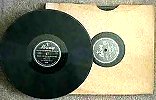 radio vs. records Record sales in the late 1920s were poor, due to the new popularity of radio. A rivalry soon developed between the two industries. Throughout the 1920s and most of the 1930s, radio stations were reluctant to play recorded music on the air. By the mid 1930s, this attitude had softened, and playing records gradually gained acceptance. Of course, NBC and CBS continued to ban recordings....the only records you would hear on a network program were prerecorded sound effects. Announcers who played records often referred to their shows as make-believe ballrooms. During the 1930s, KFWB in Los Angeles and WNEW in New York pioneered this format. 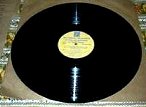 transcription discs Beginning in 1929, live radio shows were recorded for reference purposes on transcription discs. These discs were 16 inches wide, and were first made of uncoated aluminum. Later, they were made of lacquer-coated aluminum, shellac, wax, acetate and even glass! They were recorded at the "professional speed" of 33 1/3 RPM, and were extremely fragile.  what's on? In 1932, the content of a typical radio station consisted of 63 percent music, 21 percent educational, 12 percent literature, 2.5 percent religious and 1.5 percent novelty and comedy. racism on the radio There were unwritten rules regarding the portrayal of blacks on the radio. Any black character in a drama had to be a servant, buffoon or comical person. Black guests on variety shows couldn't be introduced with the title of Mr., Mrs. or Miss. Some performers had enough star power to defy the rules. Bing Crosby shocked sponsors when he introduced one of his guests as "Mister Paul Robeson." | ||
===========================================================================
===========================================================================
===========================================================================
===========================================================================
| Radio Shows Radio shows followed a daily schedule, which was published in magazines and newspapers. When your favorite show came on, you gathered around the old Crosley (or Zenith, or Atwater-Kent) and listened attentively, allowing the stories to unfold in your head. Adults could choose from comedies, thrillers and late night dance music. For the kids, there were westerns and outer-space adventures. | ||
|
radio classics A Christmas Carol Lionel Barrymore portrayed Ebenezer Scrooge almost every year from 1934 until his death in 1953  Listen to Lionel Barrymore in "A Christmas Carol" from 1939! (RealAudio) The Cinnamon Bear This much-loved serial was first broadcast in 1937. Read about it! 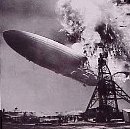 1937: The Hindenburg Disaster This was possibly the most famous news broadcast in history. A radio correspondent from WLS (Chicago) was in New Jersey, reporting on the arrival of the German airship Hindenburg. His comments were being recorded on a transcription disc for later broadcast when the airship burst into flames.  Listen to it! (RealAudio) Listen to it! (RealAudio)
Amos n' Andy This program was incredibly popular. During each 15 minute show, streets were deserted and telephone use dropped by 50 percent. Movie theaters played the show over the loudspeaker between features, or waited until the show was over before starting the film. Who's On First? In the late 1930s, Abbott & Costello introduced their classic "who's on first?" routine during an appearance on The Kate Smith Hour.  Listen to it! (.mp3) Listen to it! (.mp3)
| ----- |
 Martians attack!
Martians attack!On the night before Halloween in 1938, Orson Welles and the cast of The Mercury Theater On The Air presented a very realistic version of the H.G. Wells sci-fi thriller The War Of The Worlds. So realistic, in fact, that it created a panic when listeners assumed that America really WAS being attacked by Martians! Why the strong reaction? The 1898 story was rewritten to take place in modern times, and the plot unfolded through a series of fictitious "news broadcasts." The use of actual town names also made it seem very real. Many listeners didn't hear the beginning of the program....they tuned in about ten minutes later, during a break on the Edgar Bergen & Charlie McCarthy show. Consequently, they missed the announcement stating that the program was only fiction. The Historical Perspective About The Radio Broadcast The Script  Listen to the entire Listen to the entirebroadcast! (RealAudio)  show openings "Can a girl from a little mining town in the West find happiness as the wife of a wealthy and titled Englishman?" --Our Gal Sunday "Hi ho everybody, this is Rudy Vallee and company..." --Royal Gelatin Hour, Fleischmann Hour "Ladies and gentlemen, this is Jack Benny talking, and this is my first appearance on the air professionally. By that I mean I'm finally getting paid..." --Jack Benny, 1932 | ||
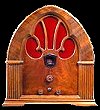 tune in your favorite shows Jack Benny Radio Archives Radio Spirits Online Radio Shows Radio Lovers: Free Online Radio Shows Yesterday USA Free Old-Time Radio Shows My YouTube Playlist: 1930s Radio |
links Bill's Old-Time Radio Page Radio's Forgotten Years stars on the radio Judy Garland Cary Grant The Marx Brothers Orson Welles Bing Crosby | |||
|  situation comedy Amos n' Andy Fibber McGee & Molly Ozzie & Harriet Lum & Abner The Goldbergs Baby Snooks Molasses n' January Stoopnagle & Budd 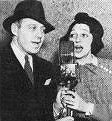 Jack Benny & Mary Livingstone just for laughs Fred Allen: -------Linit Bath Club Revue -------Town Hall Tonight Bob Hope: -------The Pepsodent Show George Burns & Gracie Allen Jack Benny: -------The Jell-O Program Ed Wynn: -------The Texaco Fire Chief The Happiness Boys 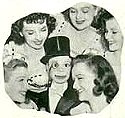 Charlie McCarthy music Lucky Strike Hit Parade WLS National Barn Dance Bing Crosby: -------Kraft Music Hall Grand Ole Opry NBC Minstrel Show Hour Of Charm Manhattan Merry-Go-Round Ziegfeld Follies Of The Air Let's Dance The Voice Of Firestone Kay Kyser's Kollege Of Musical Knowledge Jitterbug Jamboree Goodrich Silvertown Orchestra The Sammy Kaye Show The A&P Gypsies New York Metropolitan Opera 
variety Eddie Cantor: -------Chase & Sanborn Show -------The Eddie Cantor Show -------Eddie Cantor's Camel Caravan -------Texaco Town Edgar Bergen & Charlie McCarthy: -------The Chase & Sanborn Hour Raleigh & Kool Show Rudy Vallee: -------Fleischmann Hour -------Royal Gelatin Hour Chase & Sanborn Amateur Show Good News Kate Smith Hour Major Bowes Amateur Hour Rippling Rhythm Five Star Theater | |||
return to the 1930s main page